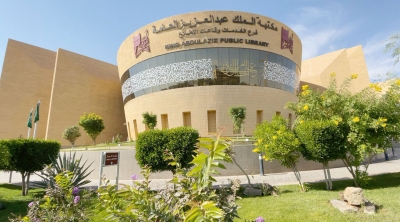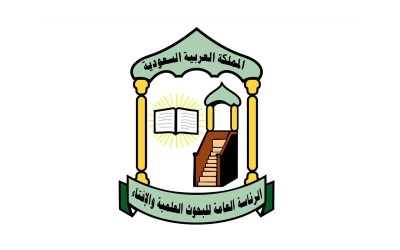


The Arafat Sermon at Masjid al-Namirah is an Islamic message to people worldwide, given on the ninth day of Dhu al-Hijjah. It is a Sunnah of Hajj, delivered from the pulpit (minbar) of Masjid al-Namirah on Mount Arafat site in Makkah al-Mukarramah. a Saudi religious scholar, officially appointed by the King of the Kingdom of Saudi Arabia, delivers it.
Date of the Arafat Sermon
The Arafat Sermon is a Sunnah of Hajj that Muslims follow while performing Hajj, which follows the example of the Prophet Muhammed peace be upon him (PBUH) after the conquest of Makkah al-Mukarramah and the Farewell Pilgrimage. The Prophet delivered the sermon on the Day of Arafat at the place where Masjid al-Namirah, also known as Ibrahim's Mosque, was built.
Pilgrims gather every year to perform the Hajj, standing on Mount Arafat site to perform its rituals from the morning of the ninth day of Dhu al-Hijjah. The scholar assigned delivers the Arafat Sermon at Masjid al-Namirah, then leads them in the noon (Dhuhr) and afternoon (Asr) prayers, combined and shortened. About four hundred thousand people pray in the mosque. Worshipers begin entering early to secure their place.
Masjid al-Namirah in Arafat
Masjid al-Namirah is the second-largest mosque in terms of area, following Makkah al-Mukarramah's Grand Mosque. It has been expanded several times by the Kingdom, the largest of which was during the era of the Founder, King Abdulaziz Bin Abdulrahman Al Saud, with an area of over 110,000 m. The mosque includes a shaded courtyard at the back with an area estimated at eight thousand m. It features six minarets, each sixty m high.
The mosque uses a broadcast room to directly transmit the sermon and Dhuhr and Asr prayers on the Day of Arafat. The mosque is the place of Amir al-Hajj, who is responsible for organizing the movement of pilgrims between sites ever since the Prophet Ibrahim (PBUH) combined and shortened the Dhuhr and Asr prayers there, followed by the Prophet Muhammed (PBUH) at the Farewell Pilgrimage. Muslim imams and rulers have followed suit since.
The topic of the Arafat Sermon
The scholar who gives the Arafat Sermon is appointed by an official commission from the Saudi King. Over the course of forty-five years, ten Saudi religious scholars have delivered it: Saleh al-Luhaidan in 1979, Abdulaziz bin Abdullah al-Asheikh from 1982 to 2015, Abdulrahman al-Sudais in 2016, Saad al-Shathri in 2017, Hussein al-Asheikh in 2018, Mohammed bin Hassan al-Asheikh in 2019, Abdullah al-Manea in 2020, Bandar Baleela in 2021, Mohammed al-Essa in 2022, and Yusuf bin Saeed in 2023.
During the Arafat Sermon, the speaker typically addresses subjects and concerns pertinent to Muslims. He explores their hopes, encourages cooperation and compassion among them, and emphasizes the importance of maintaining strong family bonds. Furthermore, he urges adherence to Islamic principles in all aspects of daily life and emphasizes the importance of helping those in need.
The Kingdom’s efforts to broadcast the Arafat Sermon
The General Presidency for the Affairs of the Grand Mosque and the Prophet’s Mosque offers the Custodian of the Two Holy Mosques Project to translate the sermons delivered at the Two Holy Mosques and Arafat Sermon. This project is a real-time, simultaneous translation of Arafat Sermon across four channels: An application for smart devices, a website dedicated to the Arafat Sermon in several languages, the electronic portal of the General Presidency for the Affairs of the Grand Mosque and the Prophet’s Mosque, and the Manarat al-Haramain Digital Platform. The goal is to enable listening to the sermon from anywhere in the world. The number of visitors to the Manarat al-Haramain Platform in 2022 was about 600 million; about 219 million people from around the world listened to the sermon.
The project began with five languages: English, French, Persian, Malay, and Urdu, plus Arabic. Chinese (Mandarin) was soon added. In 2020, it was announced that the number of languages would grow to ten, now including Turkish, Russian, Hausa, and Bengali. In 2022, the General Presidency for the Affairs of the Grand Mosque and the Prophet's Mosque announced that the number of languages supported had grown from ten to fourteen.
Axes of the translation plan for the Arafat Sermon
The plan to translate the Arafat Sermon runs along three axes: The technical axis, which means broadcasting technologies concerned with sound quality, clarity, reception quality, and its continuity, regardless of circumstances, by increasing the listening capacity, reaching 50 million listeners.
The second axis concerns translation. Sight translation is used; the text is pre-translated, drawing on scholarly understanding of the text in the source language (Arabic), followed by adherence to the rules of the language translated into, and it is broadcast through the mediums designated for the Custodian of the Two Holy Mosques’ Translation Project. The live sermon is thus given directly, following these rules.
The third axis is the media axis. A file prepared by the General Administration of Relations, Media, and Communication in the General Presidency for the Affairs of the Grand Mosque and the Prophet’s Mosque contains a number of text and video reports, which are carefully scheduled for publication to ensure their arrival in different parts of the world and maximize their benefit.
Related quizzes

